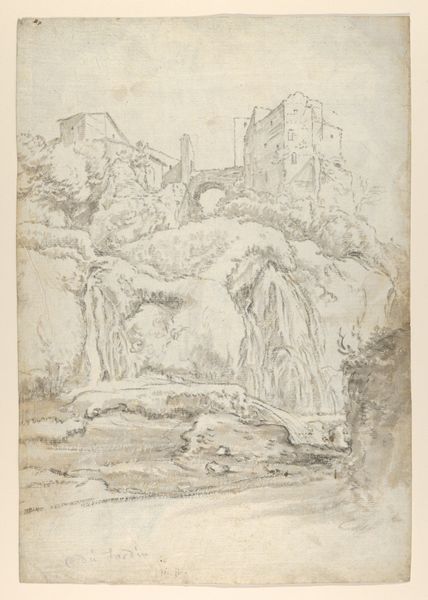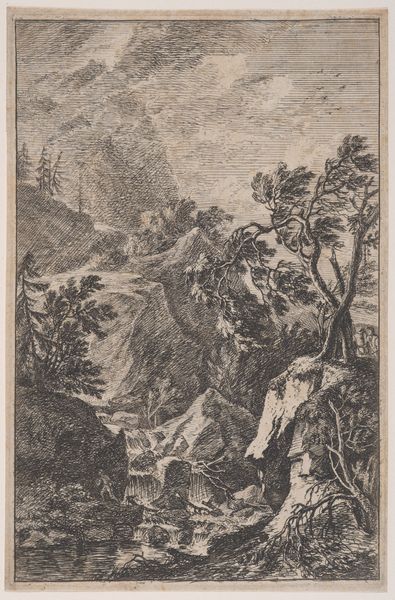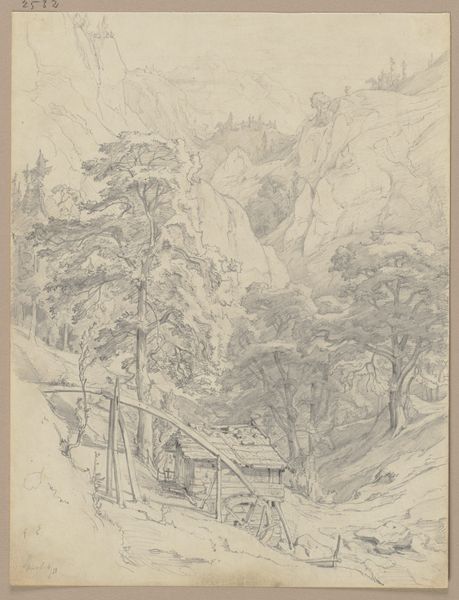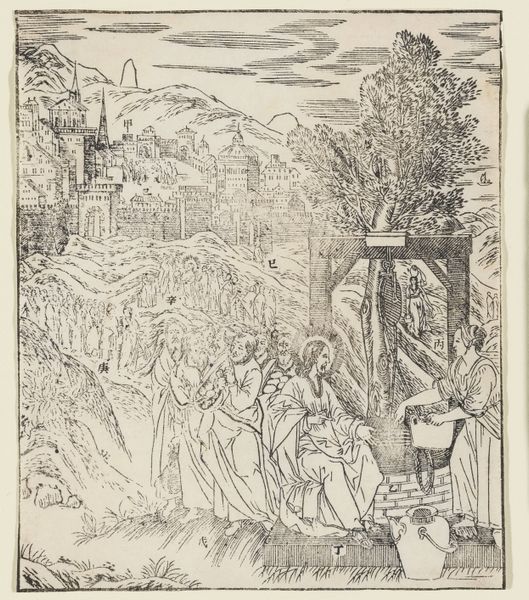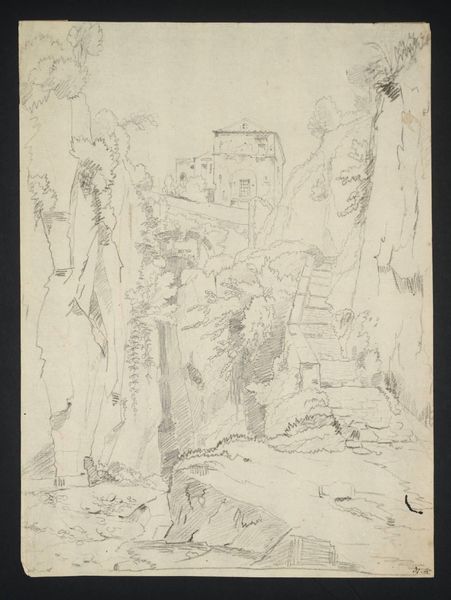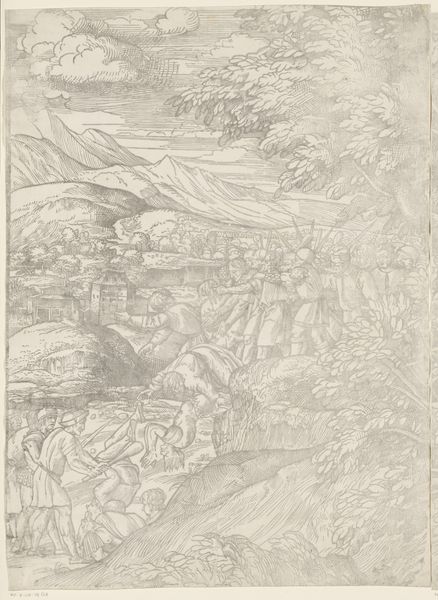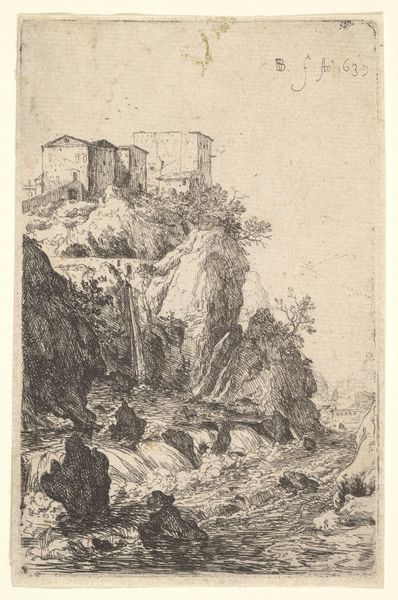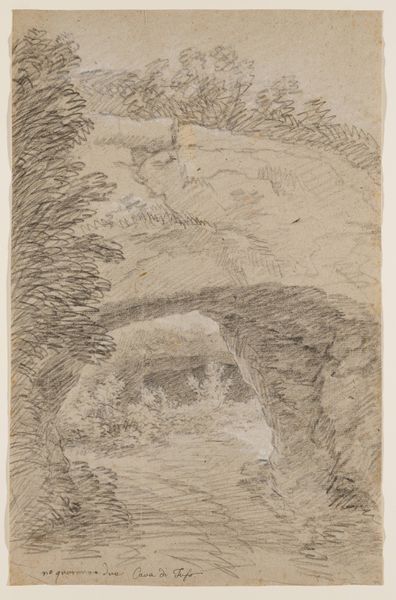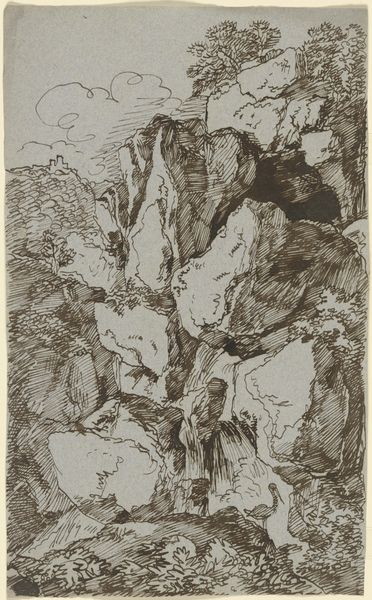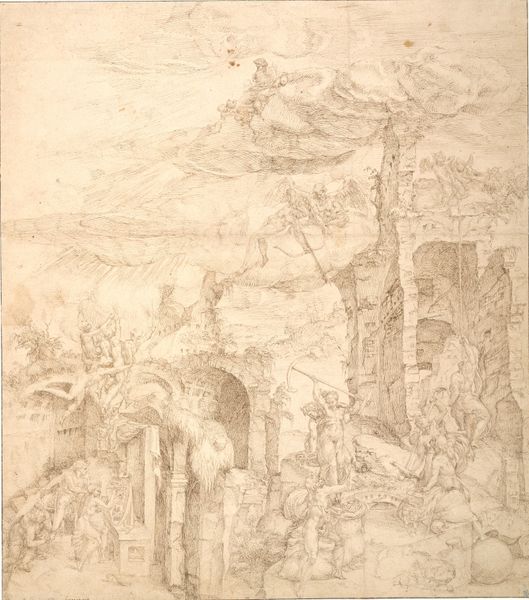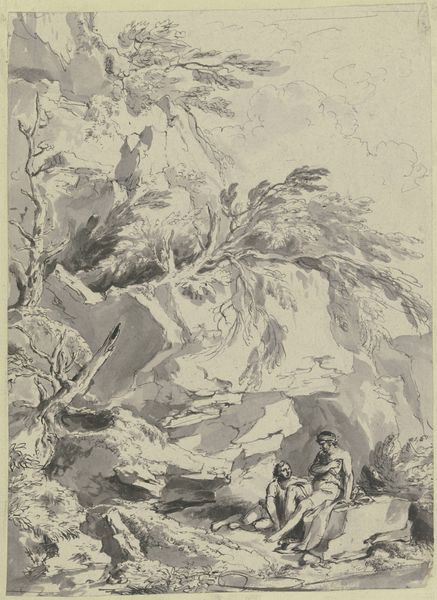
drawing, print, watercolor, ink
#
drawing
#
ink painting
# print
#
landscape
#
watercolor
#
ink
#
cityscape
#
watercolour bleed
#
italian-renaissance
Dimensions: sheet: 12 3/16 x 8 5/8 in. (30.9 x 21.9 cm)
Copyright: Public Domain
Editor: Here we have Adriaen Honich's "Italianate Buildings on a Hill at Tivoli," dating somewhere between 1639 and 1699. It's done with ink and watercolor, creating a very somber, almost melancholic mood. What do you see in this piece that I might be missing? Curator: I see the artist attempting to reconcile the wildness of nature with the imposition of classical architecture. The hill, rendered in these soft washes of gray and brown, seems almost to weep, mourning the loss of untouched wilderness to structured human spaces. Notice the aqueduct—a symbol of Roman ingenuity, but also of control. What emotional associations do aqueducts hold for you, personally? Editor: Control is definitely a good word. I also feel a sense of history, maybe a longing for an idealized past. The aqueduct makes me think of power but now it's crumbling, right? Like nothing lasts forever. Curator: Precisely. Consider how the light falls—or rather, doesn't fall. The subdued palette, the almost oppressive gray, could represent the weight of history, the ever-present knowledge of civilizations rising and falling. Even those trees seem weighed down, don’t they? Is it the atmosphere that imbues these forms with significance or do the Italianate structures simply loom on the landscape like that? Editor: It's interesting how you see the architecture as an imposition; I initially just saw it as part of the scene. I'm now thinking about the impermanence that that building conveys as well. Curator: This drawing reminds me of how even idealized forms, whether natural or man-made, bear the burden of time and memory. And that perhaps true beauty lies in accepting and even cherishing the ephemeral nature of existence. Editor: I agree. This conversation has shifted my perspective. I now notice that the tension within the composition really encapsulates this ongoing conflict and impermanence that you highlighted. Thanks for helping me think differently about this piece.
Comments
No comments
Be the first to comment and join the conversation on the ultimate creative platform.
